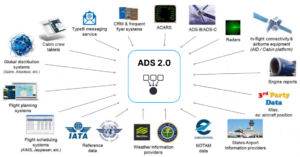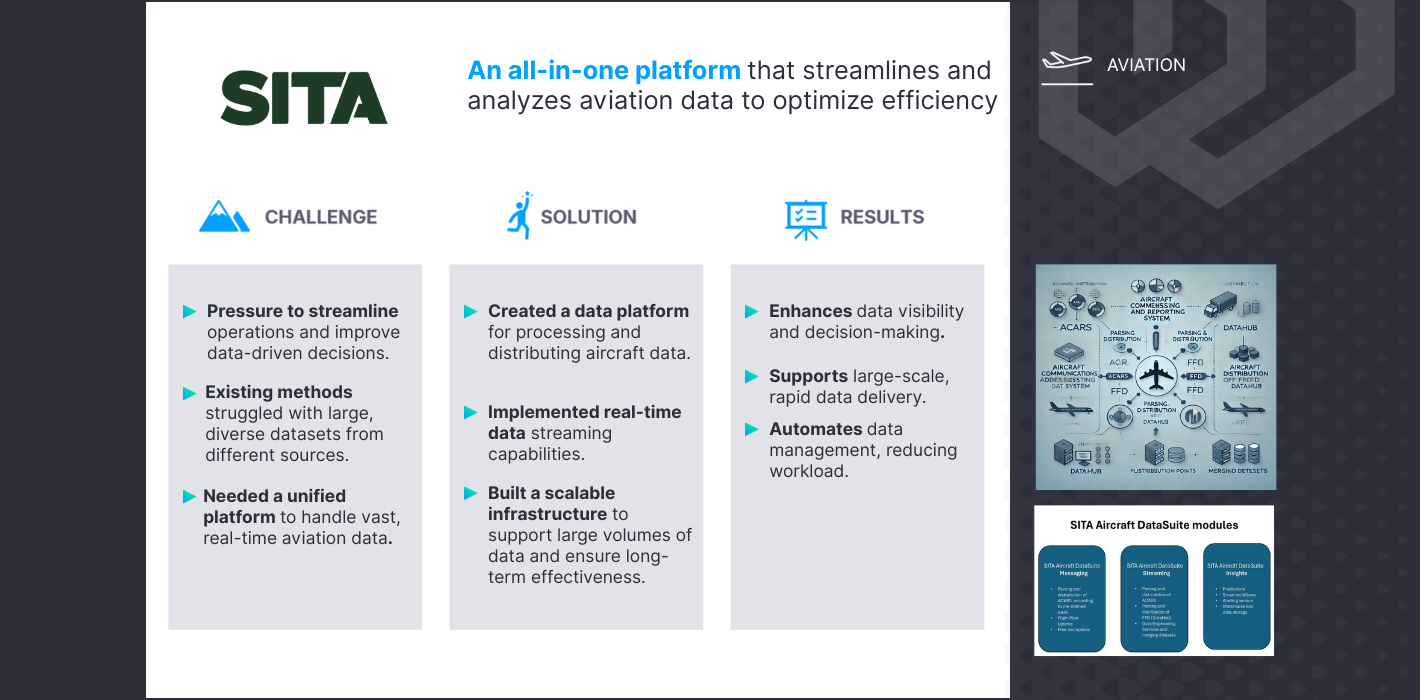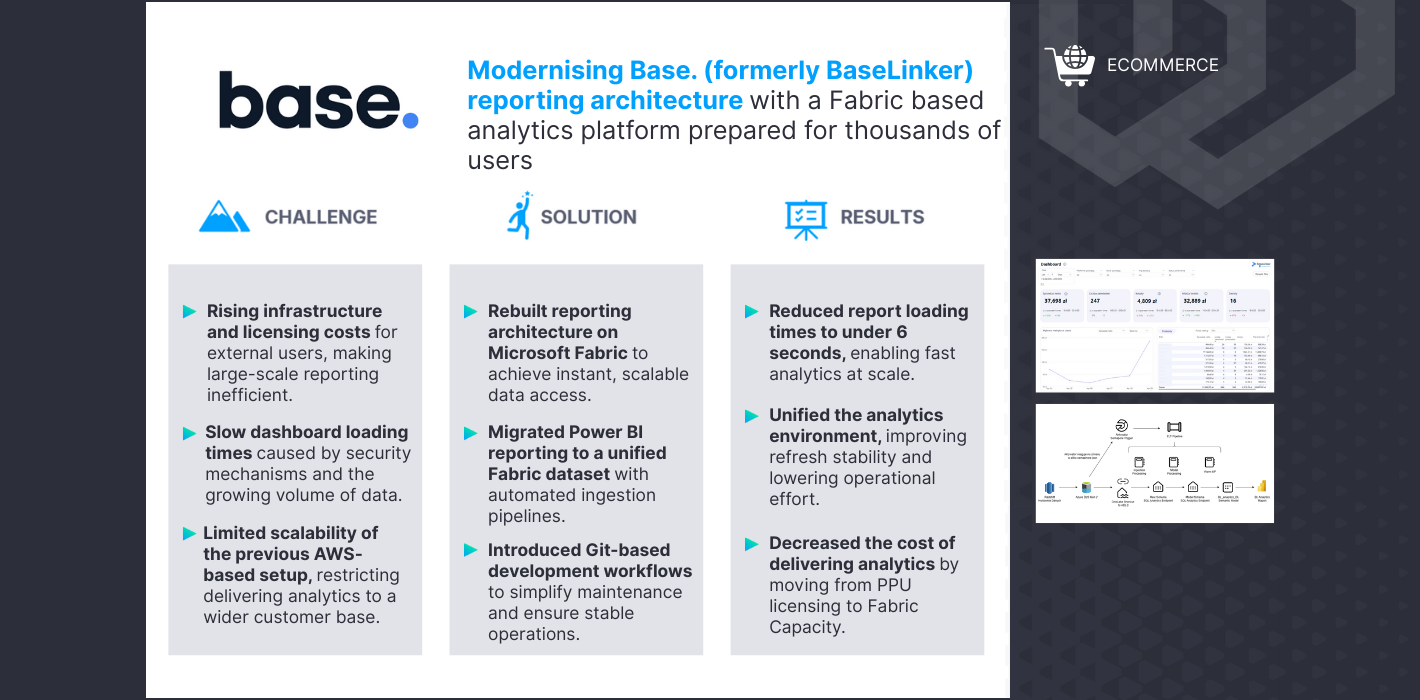The client
SITA, a global company, is a leading provider of IT and telecommunication services to the air transport industry. Drives digital transformation for more than 400 customers, covering 18,000 commercial aircraft and partnering with over 90 air navigation service providers. Serving 90% of the world’s airlines, SITA offers solutions like digital operations management, aircraft data handling, and seamless communication services for aircraft.
The challenge
SITA’s key clients from the aviation sector are under growing pressure to streamline operations and make better data-driven decisions. However, their current methods of handling large and diverse datasets often make it difficult to extract valuable insights. Some of the data is scattered and incomplete, limiting its usefulness for strategic decisions. Challenges of connecting seemingly unrelated factors further complicate efforts to develop new solutions and maximize the business potential of aviation data.
The solution
To address this challenge, as part of our data engineering services, we co-designed and developed a cutting-edge platform tailored to the unique requirements of the aviation industry.
Its aim is to gather raw data from multiple sources, such as flight details and operational information, and convert it into valuable insights. This process involves collecting, organizing, processing, and merging essential data, which is then provided to SITA’s clients to support their decision-making.

A central feature of this solution is a versatile data hub that brings together both aviation and non-aviation data. For example, it combines flight data with weather conditions or load specifications, helping users gain a more complete view of operations and uncover connections between seemingly unrelated factors.
The platform also supports frequent, near real-time data updates, with smart processing rules that automate tasks and send notifications when relevant.
Additionally, we created a sophisticated analytics system, giving users instant access to detailed insights to guide their actions.
To reach our goal, we used the following tech stack:
- Monitoring and Performance: Integrated New Relic for real-time application and performance monitoring, with Prometheus as a decoder between Flink and New Relic, providing visibility into system activities
- Data Quality Assurance: Emphasized data quality through extensive testing and automation for continuous code quality validation and future regression monitoring
- Container Orchestration: Kubernetes
- Cloud Infrastructure: Azure
- Programming Languages: Python and Scala for efficient processing
- Data Processing: Spark for large-scale data processing, ensuring high responsiveness and scalability

Benefits
Strategy
SITA, by introducing a solution to the aviation market, delivers high-quality data that has the potential to transform innovation within aircraft manufacturing. This approach empowers stakeholders to develop new solutions by uncovering correlations between various operational factors that are not obvious.
Management
The platform ensures that critical aircraft data is easily accessible across the organization, enhancing decision-making at all levels. Its scalable architecture supports current workloads and accommodates future growth without major infrastructure changes. Additionally, it simplifies access to complex data sources, including weather data, load sheets, and other aviation related data, enabling management to assess for instance delay probabilities by analyzing correlations.
Operations
Solution automates data integration and processing, significantly minimizing manual workloads and enhancing overall efficiency. The platform accelerates data integration while implementing data quality rules that identify errors at the source, allowing for immediate correction. Additionally, the solution is intended to empower non-technical users to manage and interpret complex aviation data effectively, improving operational efficiency across the company.


 (+48) 508 425 378
(+48) 508 425 378 office@bitpeak.pl
office@bitpeak.pl








